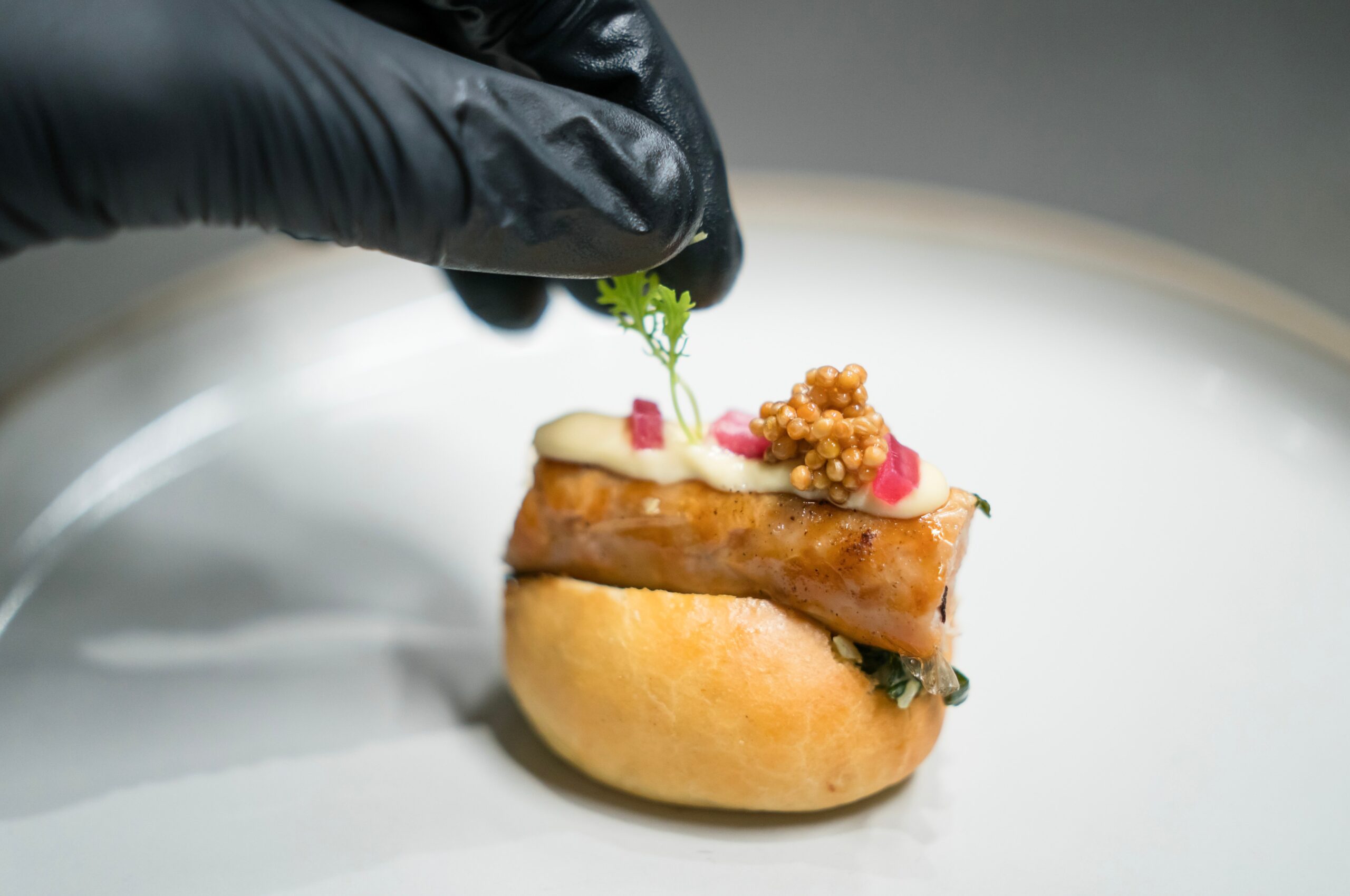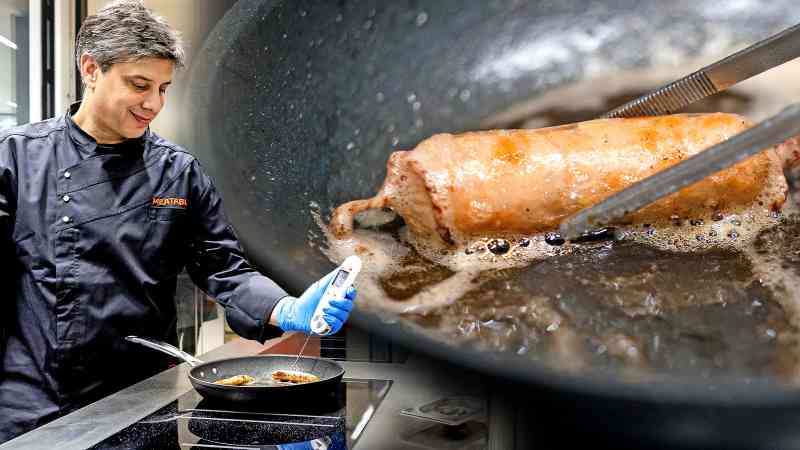Taste-testing the world’s first lab-grown sausage — is it a banger?
It sounds like an unsolvable riddle. How do you make a sausage that is made of pork but without a pig needing to meet its untimely demise? Food scientists in the Netherlands believe they have found a way, and will soon be offering it to barbecuers around the world.
The sausages are made by the Dutch company Meatable, which is among the first companies in the world to manufacture “cultivated” lab-grown sausages. Yet despite not having grown inside a pig, they do still have pork at the heart of them.
Scientists at the company’s headquarters in Leiden take stem cells from a live pig, tweak the DNA of the cells and prime them to turn into muscle or fat. From there they dip the cells into an amber-coloured broth of sugars, vitamins and amino acids. They then multiply and transform into the “meat” used to make the thin, pale sausages that look identical to those you would find in your local supermarket.

The process itself is not revolutionary. It is the same that the company’s chief technology officer Daan Luining used to make what is thought to be the first lab-grown burger in 2013. What is revolutionary, however, is the time taken to produce the meat.
Compared with the 240 days to rear a pig on a farm, or two weeks for many other cultivated meat companies to create their products, Meatable takes four days to turn the stem cells into fat and muscle. It claims to be faster than any other company in the world.
Krijn de Nood, Meatable’s chief executive, describes them as “sausages of hope” for diners who want the taste of meat without the ethical baggage.
“We need to produce [meat] in a better way. You could say ‘Hey, let’s all go vegan tomorrow’, but that’s just not going to happen,” he said. “What we hope is that more and more people realise the downside of eating meat, whether it’s on climate change, or its land use and water use.

“For me, the personal driver is animal welfare, I think that’s something that cannot be denied. And I think the hope is that we can continue to enjoy the products that we love without having to worry about the negative side-effects.”
Before the tasting begins, de Nood enthuses that the sausages “have the same taste and texture as normal pork sausages”.

Having not eaten one in five years, I am perhaps not best-placed to judge, but as I take a bite I am impressed that it has a juiciness unlike any vegetarian substitute I’ve tasted. It really does taste like pork — not quite as good as a sausage from the butcher, but basically indistinguishable from the standard fare in supermarkets.
• Lab-grown fat: the future for vegetarian barbecues• Britain’s first lab-grown meat: it’s for cats
The reason why it’s not quite as tasty as high-quality meat may be that this sausage is in fact only partially lab-grown. It contains about 30 per cent cultivated pork fat, and the rest is a mixture of chickpeas, soy, peas and wheat. The fat plays an outsized role in determining the taste, providing that juiciness which no plant-based alternative can emulate.
The recipe is undergoing regulatory scrutiny in Singapore, before Meatable turns its sights to the US, where two cultivated products were approved last year. De Nood says it will be up to four years before Britons can taste them, however, because after Brexit the UK has had to build “a whole infrastructure” of food regulation.
He does not anticipate that cultivated meat will supplant conventional animal farming, but has set his sights on converting ethical diners who have a hunger for traditional fare.




Post Comment